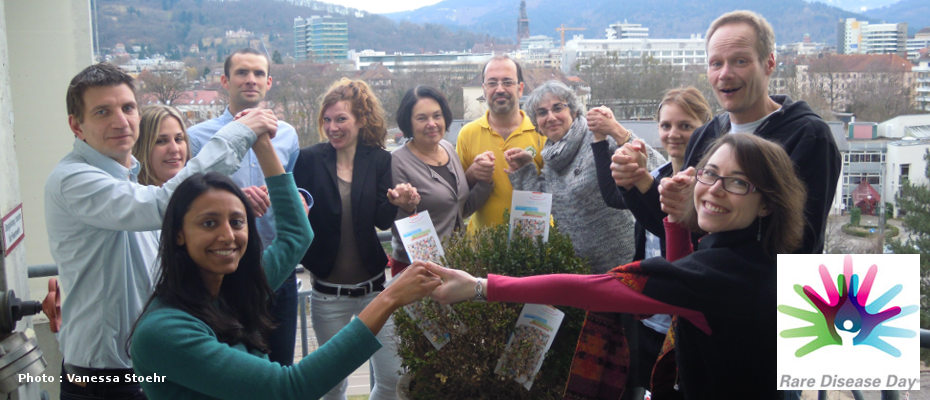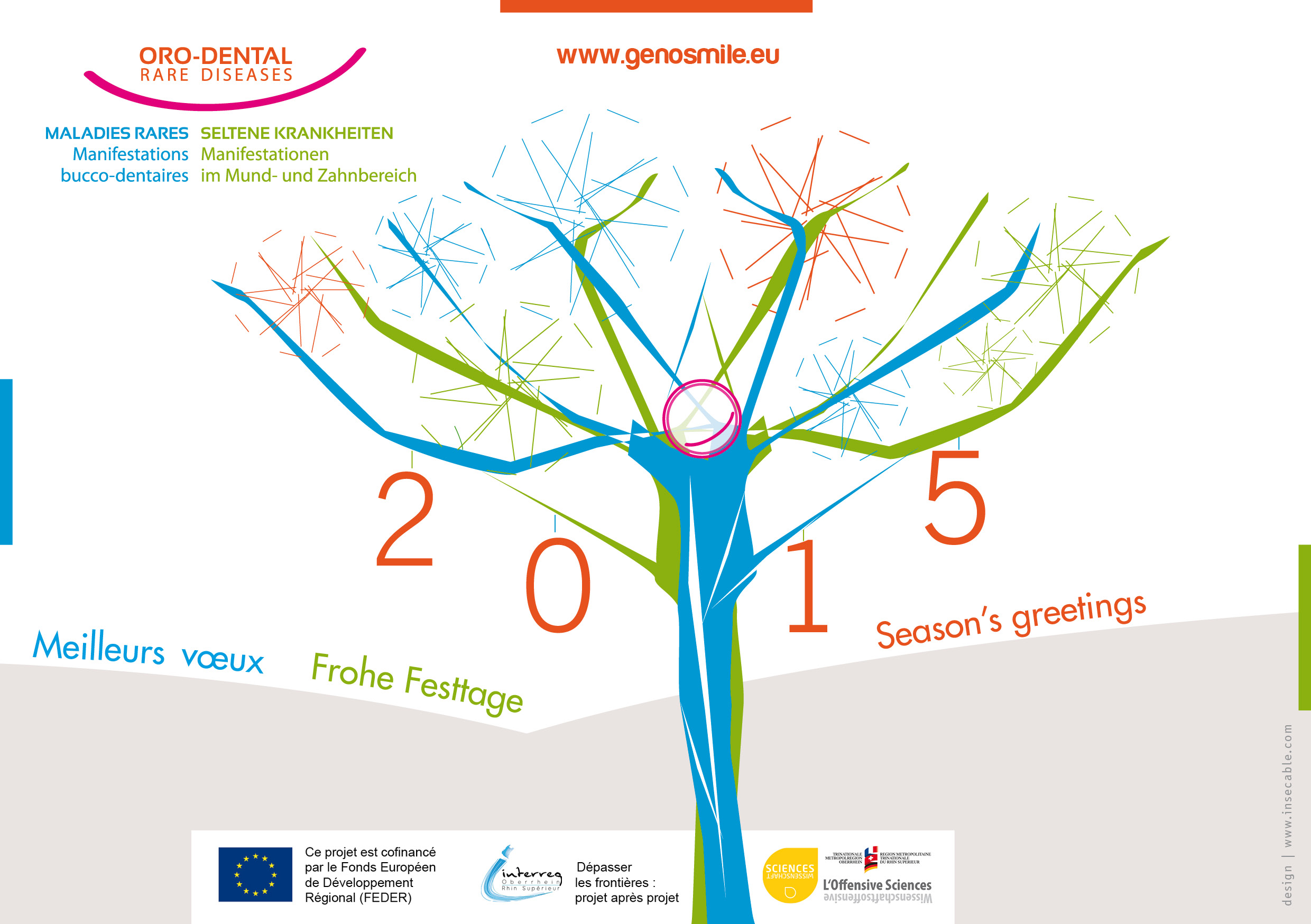Journée internationale des maladies rares 2015
Le thème de la Journée internationale des maladies rares 2015, Vivre avec une maladie rare,rend hommage aux patients, aux familles et aux soignants impliqués dans la lutte contre les maladies rares au quotidien.
Le projet de recherche « Manifestations bucco-dentaires des maladies rares » s’associe à ce message. Par le travail collaboratif que nous menons ensemble, chirurgiens-dentistes, médecins, chercheurs, enseignants-chercheurs, centre de référence et association de malades, avec une dimension transfrontalière, nous soutenons cette action et son slogan Chaque jour, main dans la main qui évoque la solidarité entre familles, associations de patients et communautés.


